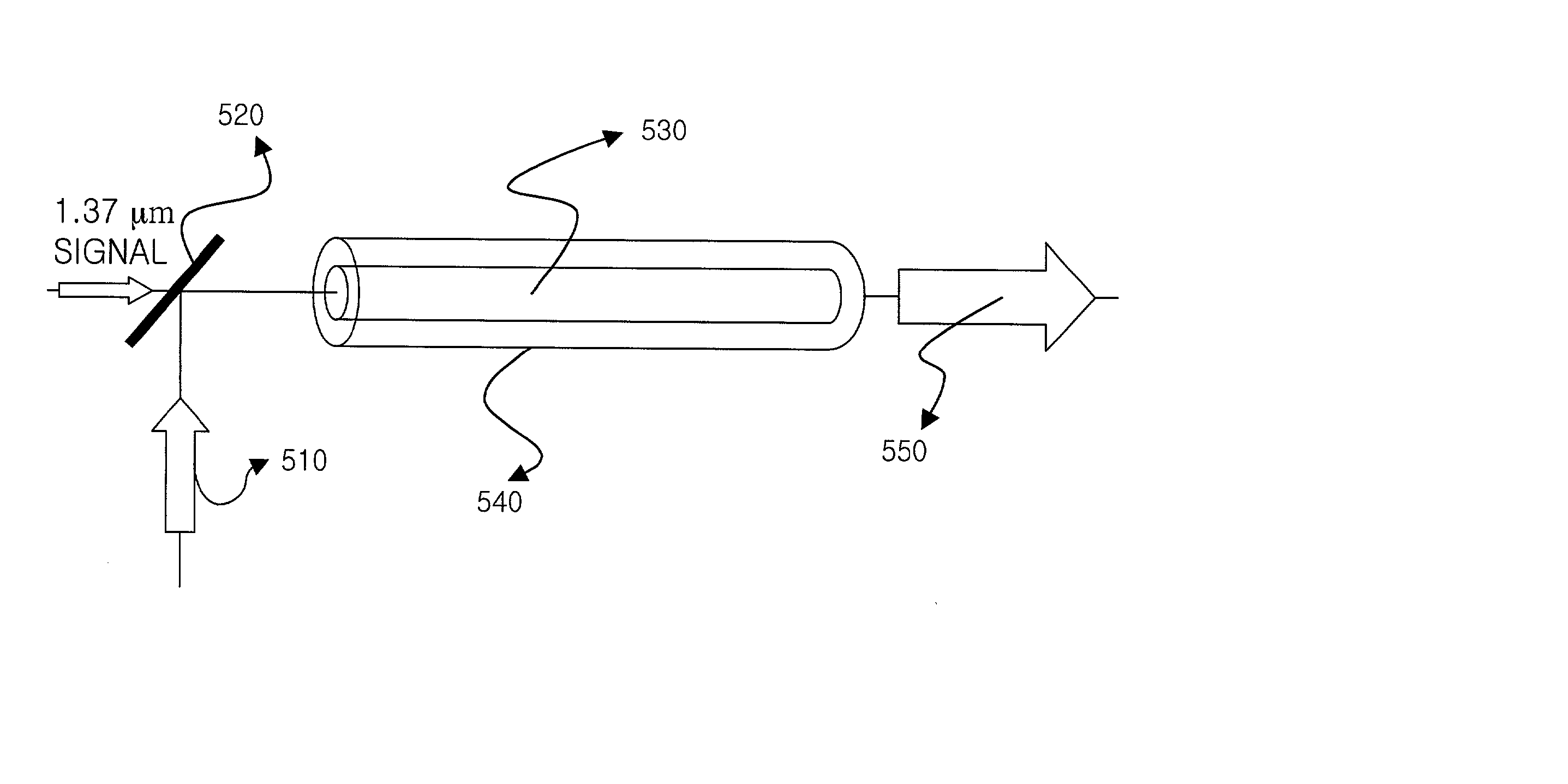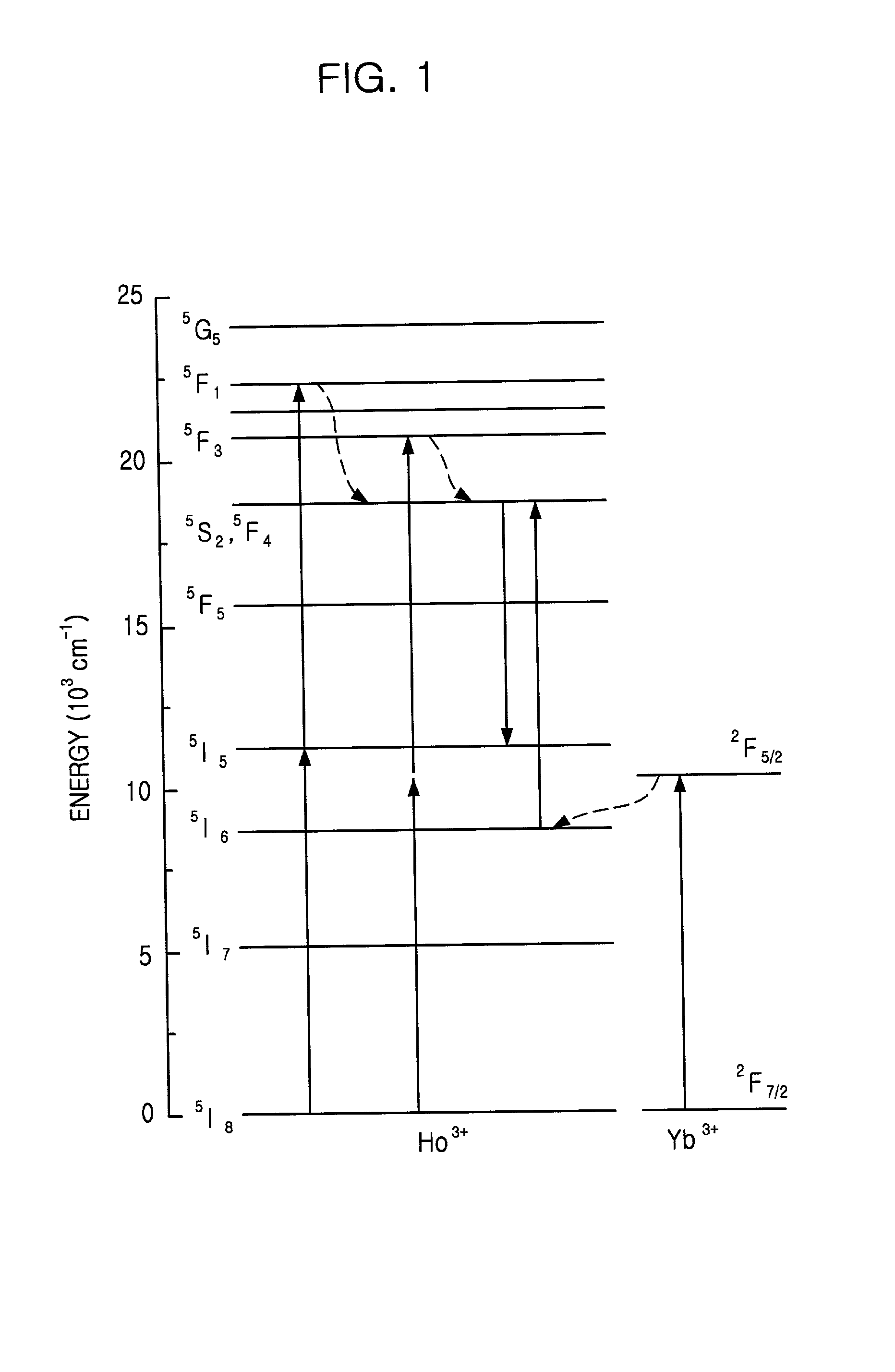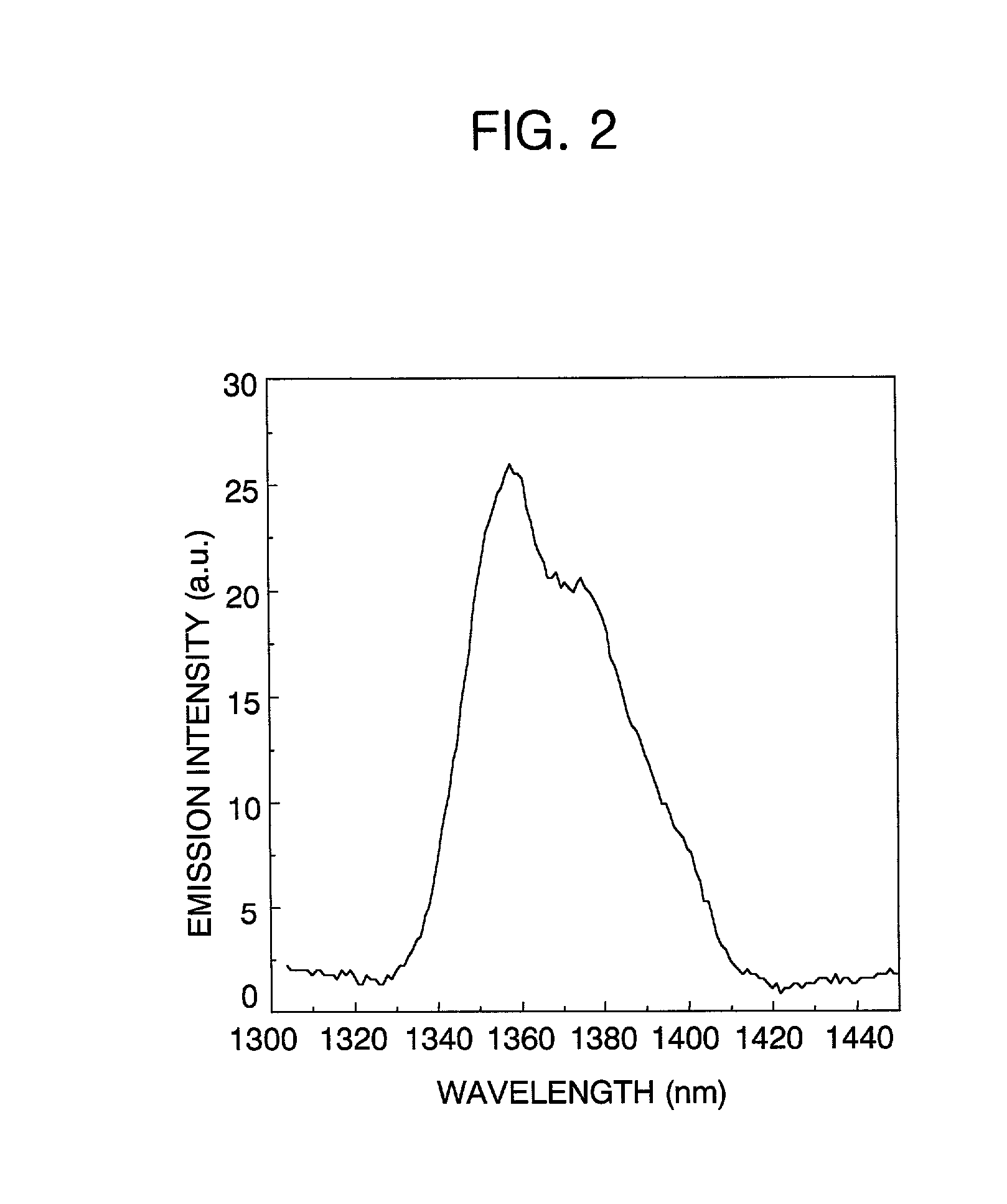Optical amplifier incorporating therein holmium-doped optical fiber
a technology of optical amplifier and optical fiber, which is applied in the direction of optical elements, instruments, active medium materials, etc., can solve the problems of increasing the loss of splicing to the transmission silica optical fiber, the difficulty of securing the suitable pumping source in practice, and the possibility of upconversion pumping
- Summary
- Abstract
- Description
- Claims
- Application Information
AI Technical Summary
Problems solved by technology
Method used
Image
Examples
example 2
Optimized Concentration of Holmium
[0033] For determining how much holmium ions are doped into the fluoride glass, the fluorescence lifetime of the (.sup.5S.sub.2, .sup.5F.sub.4) level is measured, experimentally. As the concentration of the holmium increases, the fluorescence lifetime of the (.sup.5S.sub.2, .sup.5F.sub.4) level decreases. This phenomenon is referred to a concentration quenching.
[0034] Referring to FIG. 3, there is a graph showing various fluorescence lifetimes measured from several heavy metal fluoride glasses, wherein the concentrations of the doped holmium are different there among. The fluorescence lifetime is nearly constant when the concentration of the holmium is less than 0.5 mole %. But, the fluorescence lifetime is remarkably reduced at approximately 1.0 mole %. Therefore, it is preferable that the doped amount of the holmium should be less than 0.5 mole %. Moreover, in order to enhance the utility of an optical amplifier, it is preferable that upconversion...
example 3
Excitation Spectrum of Ho.sup.3+-doped Sample
[0035] The excitation spectrum of the 0.3 mole % holmium-doped sample is measured in which spectrum range is approximately 850 nm to 1,000 nm. In the experiment, the pumping source is used as a Ti-sapphire laser and the intensity of the pumping light is fixed. Referring to FIG. 4, there is the excitation spectrum of the holmium-doped sample. In this figure, the 1,300 nm fluorescence is observed when it is pumped at the wavelengths ranging from approximately 880 nm to 920 nm and approximately 970 nm to 990 nm.
[0036] The pumping wavelengths ranges are half times to the energy of .sup.5F.sub.1 level, i.e., 22,300 cm.sup.-1, and the energy of .sup.5F.sub.3 level, i.e., 20,700cm.sup.-1. Since an oscillator strength of .sup.5I.sub.8.fwdarw..sup.5F.sub.1 absorption transition is higher than that of .sup.5I.sub.8.fwdarw..sup.5F.sub.3 transition and .sup.5I.sub.8.fwdarw..sup.5F.sub.5 transition exists in the range of about 880 nm to 920 nm, a pump...
example 4
Excitation Spectrum of Ho.sup.3+ / Yb.sup.3+ Co-doped Sample
[0039] The excitation spectrum of the Ho.sup.3+ / Yb.sup.3+ co-doped sample is measured under the same condition of the example 3. In this experiment, it is observed that the fluorescence intensity of 1,370 nm band is improved by about 100 times to 1,000 times according to the addition of the ytterbium ions. Referring back to FIG. 4, the 1,370 nm fluorescence is observed at the wavelengths ranging from approximately 880 nm to 920 nm, as same to the result of the example 3. It is noticed that the excitation seems to be happened at 910 nm to 1,000 nm because the pumping efficiency at 910 nm to 1,000 nm is approximately 100 times to 1,000 times higher than that of the holmium-doped sample. At the wavelengths ranging from 910 nm to 1,000 nm in which the co-doped sample represents an excellent upconversion pumping characteristic, .sup.2F.sub.7 / 2.fwdarw..sup.2F.sub.5 / 2 transition of the ytterbium ions exists, as depicted in FIG. 1. T...
PUM
 Login to View More
Login to View More Abstract
Description
Claims
Application Information
 Login to View More
Login to View More - R&D
- Intellectual Property
- Life Sciences
- Materials
- Tech Scout
- Unparalleled Data Quality
- Higher Quality Content
- 60% Fewer Hallucinations
Browse by: Latest US Patents, China's latest patents, Technical Efficacy Thesaurus, Application Domain, Technology Topic, Popular Technical Reports.
© 2025 PatSnap. All rights reserved.Legal|Privacy policy|Modern Slavery Act Transparency Statement|Sitemap|About US| Contact US: help@patsnap.com



